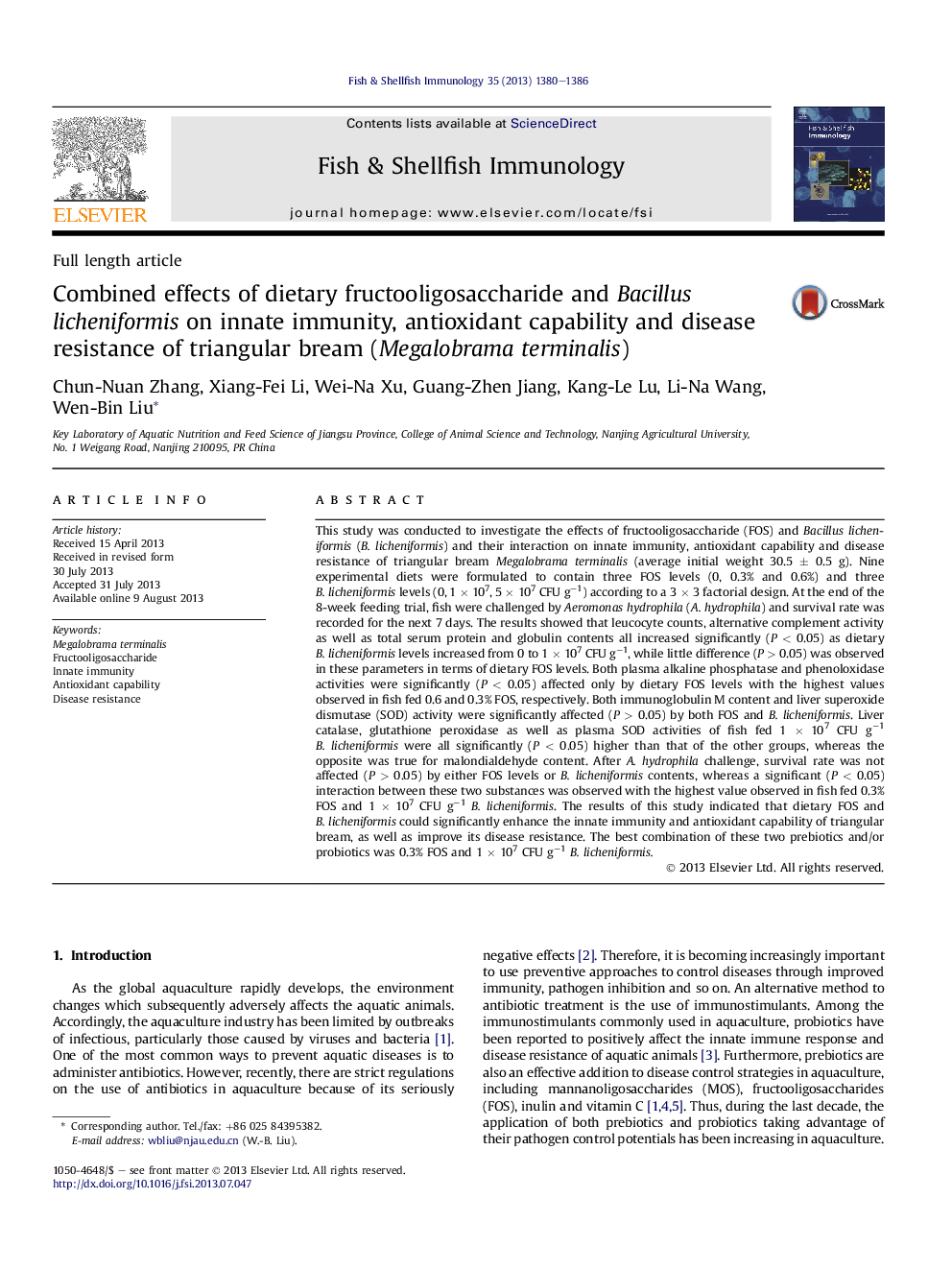| Article ID | Journal | Published Year | Pages | File Type |
|---|---|---|---|---|
| 2431708 | Fish & Shellfish Immunology | 2013 | 7 Pages |
•Both FOS and B. licheniformis significantly improves antioxidant ability of fish.•They also enhance the innate immunity and disease resistance.•An interaction was observed between FOS and B. licheniformis for triangular bream.•The best combination was 0.3% FOS and 1 × 107 CFU g−1B. licheniformis.
This study was conducted to investigate the effects of fructooligosaccharide (FOS) and Bacillus licheniformis (B. licheniformis) and their interaction on innate immunity, antioxidant capability and disease resistance of triangular bream Megalobrama terminalis (average initial weight 30.5 ± 0.5 g). Nine experimental diets were formulated to contain three FOS levels (0, 0.3% and 0.6%) and three B. licheniformis levels (0, 1 × 107, 5 × 107 CFU g−1) according to a 3 × 3 factorial design. At the end of the 8-week feeding trial, fish were challenged by Aeromonas hydrophila (A. hydrophila) and survival rate was recorded for the next 7 days. The results showed that leucocyte counts, alternative complement activity as well as total serum protein and globulin contents all increased significantly (P < 0.05) as dietary B. licheniformis levels increased from 0 to 1 × 107 CFU g−1, while little difference (P > 0.05) was observed in these parameters in terms of dietary FOS levels. Both plasma alkaline phosphatase and phenoloxidase activities were significantly (P < 0.05) affected only by dietary FOS levels with the highest values observed in fish fed 0.6 and 0.3% FOS, respectively. Both immunoglobulin M content and liver superoxide dismutase (SOD) activity were significantly affected (P > 0.05) by both FOS and B. licheniformis. Liver catalase, glutathione peroxidase as well as plasma SOD activities of fish fed 1 × 107 CFU g−1B. licheniformis were all significantly (P < 0.05) higher than that of the other groups, whereas the opposite was true for malondialdehyde content. After A. hydrophila challenge, survival rate was not affected (P > 0.05) by either FOS levels or B. licheniformis contents, whereas a significant (P < 0.05) interaction between these two substances was observed with the highest value observed in fish fed 0.3% FOS and 1 × 107 CFU g−1B. licheniformis. The results of this study indicated that dietary FOS and B. licheniformis could significantly enhance the innate immunity and antioxidant capability of triangular bream, as well as improve its disease resistance. The best combination of these two prebiotics and/or probiotics was 0.3% FOS and 1 × 107 CFU g−1B. licheniformis.
